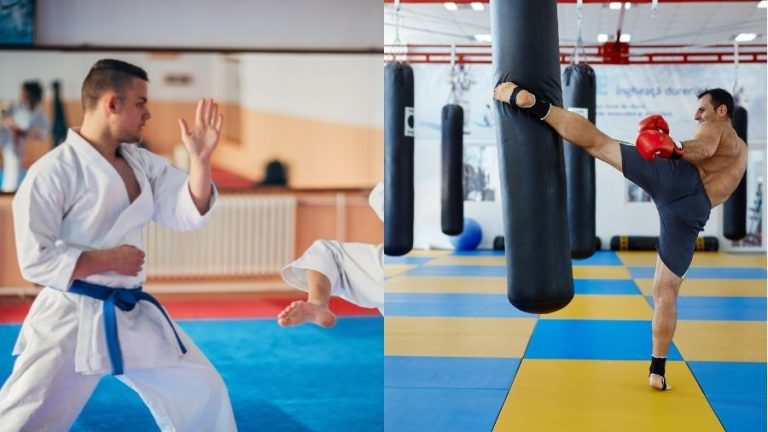Types of Kickboxing
1. Introduction to Kickboxing
Kickboxing originated in Japan in the 1960s as a hybrid martial art that combined the striking techniques of karate and Western boxing. Over the years, kickboxing has evolved and branched out into various styles, each with its own rules, techniques, and cultural influences.
2. American Kickboxing (Full-Contact)
American Kickboxing, also known as Full-Contact Kickboxing, is a style that emphasizes power and strength. Fighters are allowed to strike their opponents with full force, including punches and kicks to both the head and body. This style gained popularity in the United States and Europe during the 1970s and 1980s, and it continues to be a prominent form of kickboxing in many countries today.
3. Muay Thai (Thai Kickboxing)
Muay Thai, often referred to as the “Art of Eight Limbs,” originated in Thailand and has gained worldwide recognition for its effectiveness and intensity. It incorporates punches, kicks, knee strikes, and elbow strikes, making it one of the most versatile and demanding forms of kickboxing. Muay Thai has a rich history and cultural significance in Thailand, where it is practiced as both a sport and a martial art.
4. Savate (French Kickboxing)
Savate, also known as French Kickboxing, is a style that combines elements of boxing and French footfighting techniques. It focuses on precise and swift kicks, as well as punches and footwork. Savate originated in France during the 19th century and has since developed into a popular combat sport known for its elegance and technical finesse.
5. Sanda (Chinese Kickboxing)
Sanda, or Chinese Kickboxing, is a full-contact combat sport that originated in China. It incorporates punches, kicks, throws, and sweeps, allowing fighters to engage in both striking and grappling techniques. Sanda competitions emphasize explosive and powerful strikes, making it a thrilling and dynamic style of kickboxing.
6. K-1 Kickboxing
K-1 Kickboxing is a style that emerged in Japan in the early 1990s and quickly gained international recognition. It features a blend of various martial arts disciplines, including karate, Muay Thai, Taekwondo, and Western boxing. K-1 Kickboxing tournaments showcase high-level striking skills and are known for their fast-paced action and knockout finishes.
7. Dutch Kickboxing
Dutch Kickboxing is a style that originated in the Netherlands and has had a significant influence on the development of kickboxing worldwide. It combines traditional Muay Thai techniques with a greater emphasis on fast-paced combinations and movement. Dutch Kickboxing has produced many world-class fighters who have achieved success in international competitions.
8. Point Fighting Kickboxing
Point Fighting Kickboxing, also known as Semi-Contact Kickboxing, focuses on scoring points rather than knockout finishes. Fighters engage in controlled strikes and must follow specific rules regarding contact and techniques. Point Fighting Kickboxing is popular in both amateur and professional settings, offering a less intense but highly tactical form of competition.
9. Low-Kick Kickboxing
Low-Kick Kickboxing places a particular emphasis on low kicks, targeting the opponent’s legs. This style originated in Thailand and gained popularity through the success of Dutch Kickboxers who utilized low kicks as a dominant strategy. Low-Kick Kickboxing requires fighters to have strong leg conditioning and offers a strategic approach to wearing down opponents.
10. Fitness Kickboxing
Fitness Kickboxing is a non-competitive form of kickboxing that focuses on physical fitness and cardiovascular conditioning. It incorporates the techniques of kickboxing into high-energy workouts, providing an effective way to burn calories, improve strength and endurance, and relieve stress. Fitness Kickboxing classes are widely available and cater to individuals of all fitness levels.
11. Kickboxing for Self-Defense
Kickboxing for self-defense emphasizes practical techniques that can be used in real-life situations. It combines striking techniques with effective self-defense strategies, teaching individuals how to defend themselves and escape dangerous situations. Kickboxing provides valuable self-defense skills, boosts confidence, and improves overall fitness and mental resilience.
12. Kickboxing for Women
Kickboxing has become increasingly popular among women as a form of exercise, self-defense, and empowerment. It offers a full-body workout, helps build strength and endurance, and enhances self-confidence. Kickboxing provides a supportive and inclusive environment for women to develop their skills, improve fitness levels, and engage in a challenging and rewarding physical activity.
13. Kickboxing for Children and Teens
Kickboxing for children and teens offers numerous benefits, including improved physical fitness, discipline, and self-confidence. Age-appropriate training programs focus on teaching fundamental techniques, developing coordination and balance, and instilling values such as respect and sportsmanship. Kickboxing classes for children and teens promote a healthy and active lifestyle while emphasizing the importance of safety and proper technique.
14. Kickboxing Equipment and Gear
To practice kickboxing safely and effectively, it is essential to have the right equipment and gear. This section will discuss the necessary items for kickboxing, including gloves, hand wraps, shin guards, mouthguards, and protective gear. It will provide guidance on selecting the appropriate equipment and offer tips on maintenance and care.
15. Kickboxing Training Tips
Training is a crucial aspect of kickboxing, whether you are a beginner or an experienced practitioner. This section will provide valuable training tips and techniques to enhance your skills, improve your conditioning, and maximize your performance. It will cover aspects such as warm-up exercises, proper technique execution, sparring drills, and conditioning workouts.
Conclusion
Kickboxing is a diverse and captivating combat sport that offers a wide range of styles and benefits. Whether you are interested in competitive fighting, physical fitness, self-defense, or personal development, there is a type of kickboxing that suits your goals and interests. By exploring the various styles and understanding their unique characteristics, you can make an informed decision and embark on an exciting kickboxing journey.







